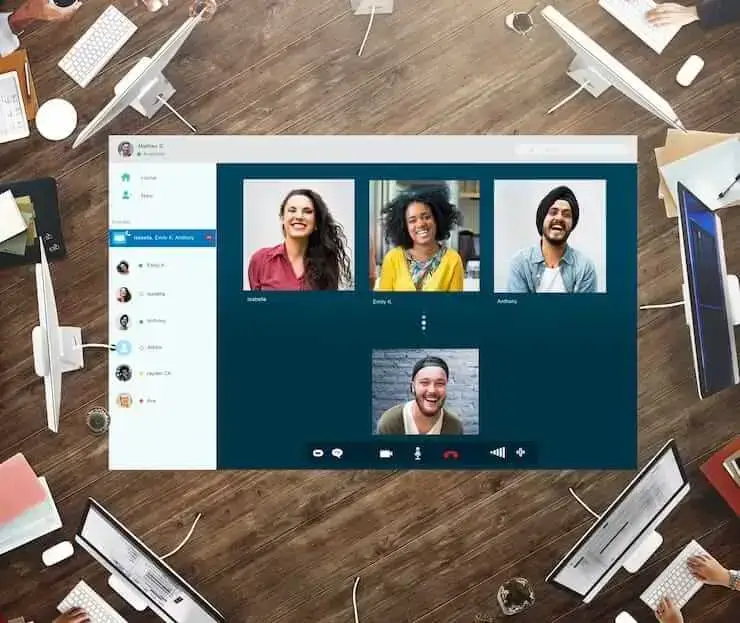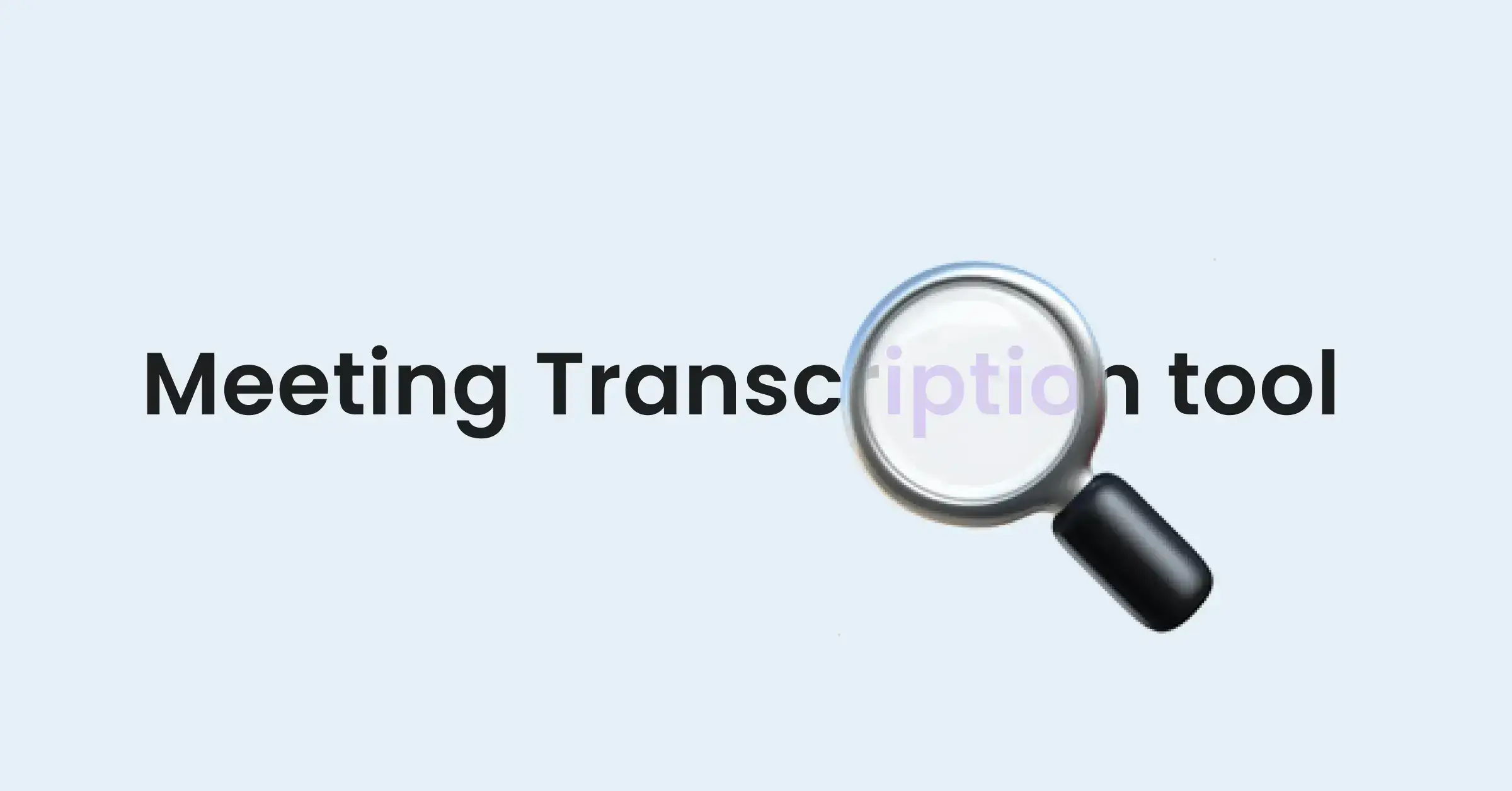What is Virtual Meeting & What to Expect in 2026: A Look Ahead
Discover the future of virtual meetings in 2026 and some out-of-time tips with this insightful article.

✅ Free meeting recording & transcription
💬 Automated sharing of insights to other tools.

Image by Steven Matt from Pixabay
The way we conduct meetings has evolved greatly over the years, and virtual meetings have become increasingly popular. In 2026, we can expect further advancements in virtual meeting technology, providing us with even more opportunities for collaboration and connection.
In the 63rd International Meetings Statistics Report released in 2022, the UIA (Union of International Organizations) estimated that the number of meetings would increase by 11% in 2023. Moreover, the report predicts that this number will continue to rise by around 34% by 2027.
Understanding the key aspects of virtual meetings can help individuals and businesses adapt and thrive in the evolving landscape of work. Let’s do that in this article and discuss the technology needed in 2026 and beyond, and offer tips for a your next successful virtual online meeting.
Virtual Meeting Definition & Benefits
Virtual meetings refer to gatherings where participants interact remotely using digital technology. Unlike traditional face-to-face meetings, virtual meetings take place online through platforms such as Zoom, Microsoft Teams, or Google Meet. These platforms allow participants to join from anywhere in the world, eliminating the need for physical presence.
Virtual meetings have become increasingly popular in recent years, especially with the advancement of technology and the need for flexible work arrangements after the COVID breakout. With virtual meetings, individuals can connect and collaborate with colleagues, clients, or business partners without the constraints of time and location. To ensure secure virtual environments, organizations can implement container security to safeguard sensitive data during online collaborations.
One of the key advantages of virtual meetings is the ability to save time and resources. Instead of traveling to a specific location, participants can simply log in to the meeting platform from their own devices. This not only reduces travel costs but also minimizes the carbon footprint associated with commuting.
Furthermore, virtual meetings offer a range of features that enhance communication and collaboration. Participants can share screens, present slideshows, and even record the entire meeting for future reference. These features not only facilitate effective information sharing but also enable real-time collaboration on projects and tasks.
Another benefit of virtual meetings is the inclusivity they provide. Participants who may have physical disabilities or limitations can easily join and participate in virtual meetings without facing any accessibility barriers. This promotes equal opportunities and ensures that everyone's voice is heard and valued.
Virtual meetings also offer the flexibility to schedule meetings at any time, accommodating participants across different time zones. This is particularly advantageous for global organizations or teams working on international projects. With virtual meetings, individuals can collaborate seamlessly, regardless of their geographical location.
However, it is important to note that virtual meetings also come with their own set of challenges. Privacy and cyber security concerns as well as technical issues, such as poor internet connection or software glitches. This can disrupt the flow of the meeting and hinder effective communication. Additionally, virtual meetings may lack the personal touch and non-verbal cues that are present in face-to-face interactions, making it important for participants to be mindful of their communication style and actively engage with others.
Virtual Meeting Examples in Our Lives
Virtual meetings have become prevalent in various industries and fields.
For instance, in the business world, companies often rely on virtual meetings to conduct team collaborations, client meetings, and even job interviews. This has revolutionized the way businesses operate, as it allows for seamless communication and collaboration regardless of geographical barriers. With virtual meetings, companies can save on travel expenses while still maintaining effective communication and productivity.
In the education sector, virtual meetings facilitate remote learning and enable students to interact with their teachers and classmates. This has become especially important in recent times, as schools and universities have had to adapt to remote learning due to the COVID-19 pandemic. Virtual meetings provide a platform for students to attend lectures, participate in discussions, and ask questions, all from the comfort of their own homes. It also allows for greater flexibility in scheduling, as students can access recorded sessions at their convenience.

Moreover, virtual meetings have also made a significant impact on the entertainment industry. Musicians and performers have embraced virtual concerts and live-streamed performances as a way to connect with their fans and continue their artistic endeavors during times when live events are not possible. Virtual meetings have allowed artists to reach a global audience, breaking down barriers of distance and creating unique and immersive experiences for fans from the comfort of their own homes.
Virtual meetings also find applications in healthcare, where doctors can provide remote consultations to their patients. This has proven to be particularly beneficial for patients who live in remote areas or have limited mobility. Through virtual meetings and using the best EMR for small practice, doctors can assess patients' conditions, provide medical advice, and even prescribe medication, all without the need for an in-person visit. This not only saves time and money for both the patients and the healthcare system, but it also reduces the risk of exposure to contagious diseases.

Furthermore, virtual meetings have proven to be a valuable tool in the field of research and development. Scientists and researchers from different parts of the world can collaborate and share their findings through virtual conferences and meetings. This has accelerated the pace of scientific discovery and innovation, as experts can exchange ideas and work together on projects without the need for extensive travel. Virtual meetings have also opened up opportunities for interdisciplinary collaborations, bringing together researchers from various fields to tackle complex global challenges.
What is it Like to Participate in a Virtual Meeting
Participating in a virtual meeting can be a unique experience. While it offers convenience and flexibility, it also comes with its own set of challenges. One advantage is the ability to join meetings from the comfort of your own home or any location with an internet connection.
Virtual meetings promote inclusivity, making it easier for individuals with mobility issues or those residing in different time zones to attend. However, it requires participants to adapt to the virtual environment and communication tools, sometimes leading to technical difficulties or distractions.
Virtual presence

Virtual meetings often involve video and audio communication, allowing participants to see and hear each other in real time. This visual interaction helps replicate face-to-face meetings to a certain extent. Additionally, virtual meeting platforms usually offer features such as screen sharing, chat functionalities, and document collaboration tools, enhancing collaboration and productivity during the meeting.
Equipped space
When participating in a virtual meeting, it is important to create a suitable environment. Finding a quiet space where you can focus and minimize distractions is crucial. Setting up proper lighting and positioning your camera at eye level can help create a more professional appearance. It is also important to dress appropriately, just as you would for an in-person meeting, as it contributes to the overall impression you make on other participants.
Technical readiness
One of the challenges of virtual meetings is the potential for technical difficulties. Internet connectivity issues, audio or video glitches, and compatibility problems with the meeting platform are common obstacles that participants may encounter. It is helpful to familiarize yourself with the meeting platform beforehand and ensure that your internet connection is stable. Having a backup plan, such as a phone number to dial in if needed, can also be beneficial in case of technical issues.
Non-verbal specifics
Another aspect to consider when participating in a virtual meeting is the need for effective communication. Since participants cannot rely on non-verbal cues as easily as in face-to-face meetings, it is important to be clear and concise in your verbal communication. Paying attention to your tone of voice and using appropriate gestures can help convey your message effectively. Additionally, utilizing the chat functionality can be useful for asking questions or providing additional information without interrupting the flow of the meeting.
Distractions of online virtual meetings
Virtual meetings also require participants to be mindful of potential distractions. Working from home or joining a meeting from a public location can introduce various interruptions, such as background noise, family members or pets entering the room, or notifications from other devices. It is important to minimize these distractions as much as possible by muting your microphone when not speaking, closing unnecessary applications or browser tabs, and informing those around you about the importance of maintaining a quiet environment during the meeting.
Virtual Meeting Technology - What You Need in 2024 and Beyond?
In 2024 and beyond, virtual meeting technology is likely to continue advancing. To ensure your online meetings are efficient, productive, and seamless, it's crucial to stay abreast of the latest tools that facilitate collaboration. Here's a comprehensive guide to the must-have virtual meeting tools for the future:
1. Virtual Conference Platforms

Zoom, Google Meet, Microsoft Teams, Webex
These virtual conference platforms have been the cornerstone of remote communication, allowing teams to connect seamlessly from anywhere in the world. Setting up meetings is fast and simple with any of those platforms. You can create a private meeting link and share it with your team members. The link will open a dedicated video meeting room that can only be accessed with a password.
Large teams with numerous remote employees often utilize custom video conferencing solutions. Depending on their specific platform configurations, they integrate video conferencing SDKs for a seamless virtual meeting experience. For instance, applications built on the React framework typically use React video SDKs to enhance their video conferencing capabilities.
Each platform brings its unique set of features, including video conferencing, screen sharing, and integrations with other productivity tools. As technology advances, expect these platforms to continuously enhance their capabilities, providing even more immersive and interactive meeting experiences.
2. MeetGeek - AI Meeting Automation Platform
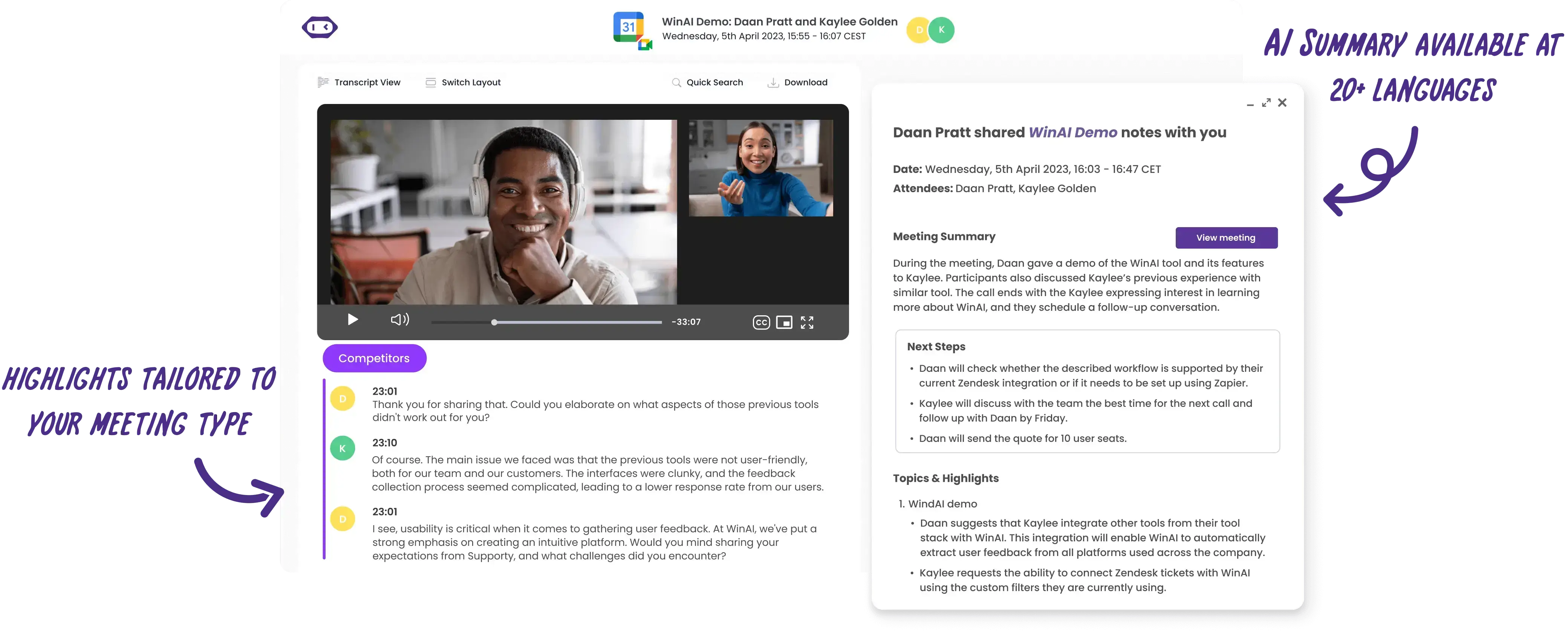
MeetGeek is a leading provider of virtual meeting technology that incorporates the latest advancements in AI. This AI-powered virtual meeting assistant automatically records, transcribes, summarizes, and analyzes your meetings, ensuring that you never miss any important details.
With MeetGeek, you and your team can fully focus on the meeting itself, without having to worry about taking meeting notes, following up on action items, or sharing the discussed information with others. MeetGeek integrates with over 2,000 apps, making it seamless to share meeting notes with your CRM, task management tools, Slack, or other platforms.
One of the unique features offered by MeetGeek is the ability to record and summarize online conversations, even if you are not physically present in the meeting room. This functionality is particularly useful when you are double-booked and need to prioritize certain meetings. It allows you to send the Notetaker to the call where your role is more passive, rather than actively participating.
3. Fellow App - meeting agenda & management platform

Fellow is a collaborative meeting platform designed to enhance team communication and productivity. It provides a centralized space for meeting agendas, notes, and action items, streamlining the entire meeting process. Fellow encourages engagement by allowing participants to contribute to agendas beforehand and facilitates real-time collaboration during meetings. As we move into the future of work, tools like Fellow will become essential for fostering team cohesion and ensuring that meetings are not just a routine but a catalyst for innovation.
4. Slack - workplace messaging tool
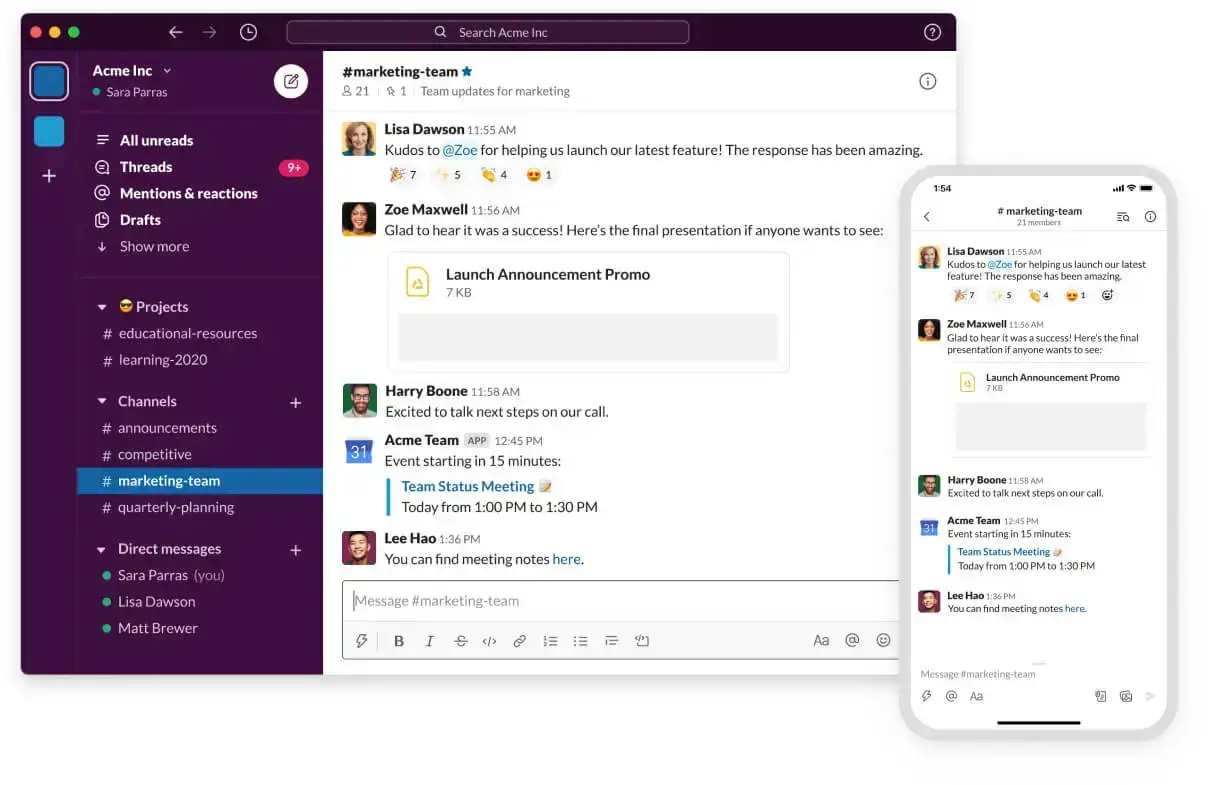
Slack has long been a favorite for team communication, and its role in virtual meetings is only becoming more pronounced. With channels, direct messaging, and integrations with other tools, Slack keeps teams connected and informed. The platform's versatility extends to virtual meetings, where it can be used for quick check-ins, sharing updates, and even conducting ad-hoc discussions. Expect Slack to continue evolving to meet the dynamic needs of remote teams.
5. Meeting Scheduling Tools
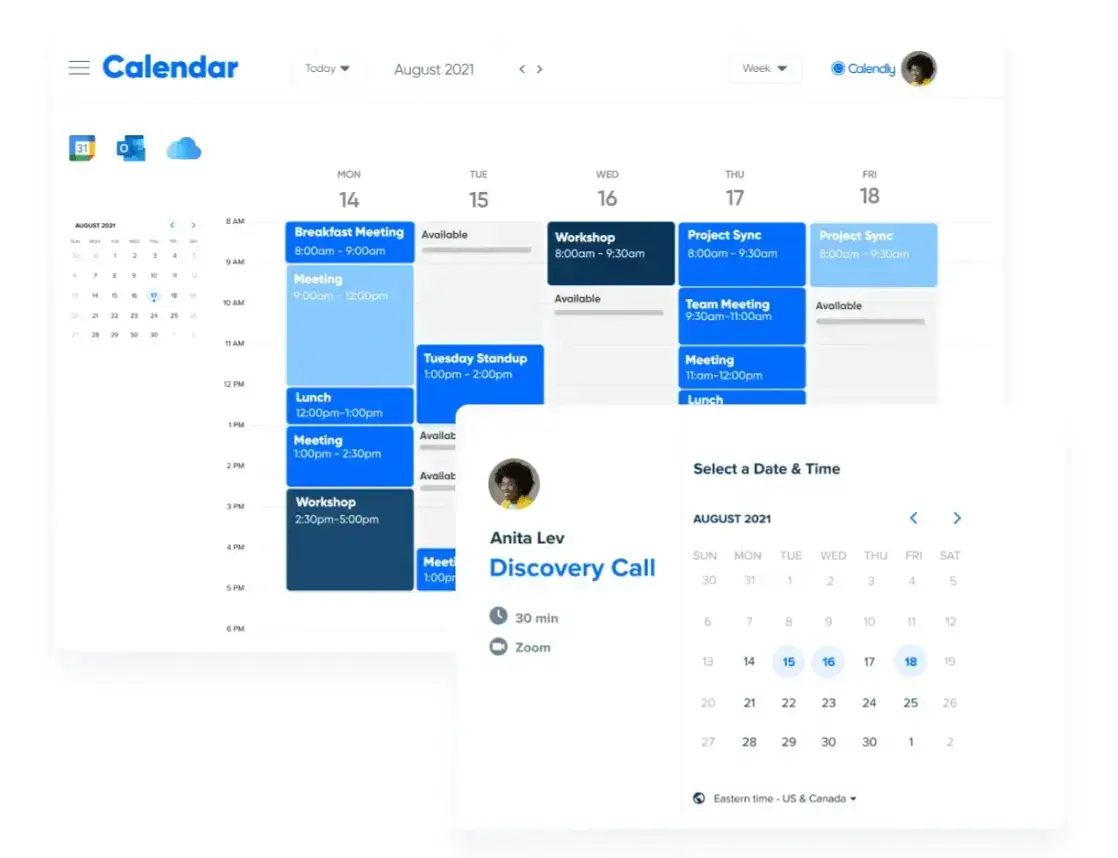
Calendly, Morgen, Reclaim, etc.
Efficiently coordinating schedules can be a time-consuming task. Tools like Calendly, Morgen, Clara, Reclaim, etc. simplifies the process by allowing users to set their availability and share a personalized scheduling link or QR code.
Participants can then choose a time slot that suits them, eliminating the back-and-forth of finding a suitable meeting time. As we navigate through the demands of a globalized workforce, scheduling tools will play a crucial role in optimizing time and ensuring that meetings are held at the most convenient times for all.
In conclusion, the landscape of virtual meeting technology is dynamic, with constant innovations aiming to enhance collaboration and productivity. Whether you're using established platforms like Zoom and Microsoft Teams or exploring cutting-edge solutions like MeetGeek and Fellow, staying informed about the latest tools will be key to making your virtual meetings more effective and enjoyable in 2024 and beyond.
Tips for a Successful Virtual Online Meeting
To make the most out of virtual online meetings, it is essential to follow certain best practices:
- Prepare in advance: Familiarize yourself with the virtual meeting platform and test your audio and video setup.
- Create an agenda: Clearly define the meeting objectives and share the agenda with participants beforehand.
- Engage actively: Be present and actively participate in the meeting. Avoid distractions and actively listen to others.
- Keep it concise: Virtual meetings can be tiring, so keep presentations and discussions concise and to the point.
- Encourage participation: Create opportunities for everyone to contribute by inviting input and feedback.
- Utilize collaboration tools: Make use of screen sharing, document collaboration, and chat features to enhance collaboration during the meeting.
- Follow up: After the meeting, send a summary of the discussion and action items to ensure clarity and accountability. Use ready-made meeting follow-up templates to save extra time.
As we look forward to virtual meetings in 2026, we can expect exciting advancements in technology and evolving ways of collaboration. By embracing virtual meeting practices and utilizing the right tools, we can enhance productivity and foster meaningful connections, irrespective of physical distance.
.avif)





























.png)






